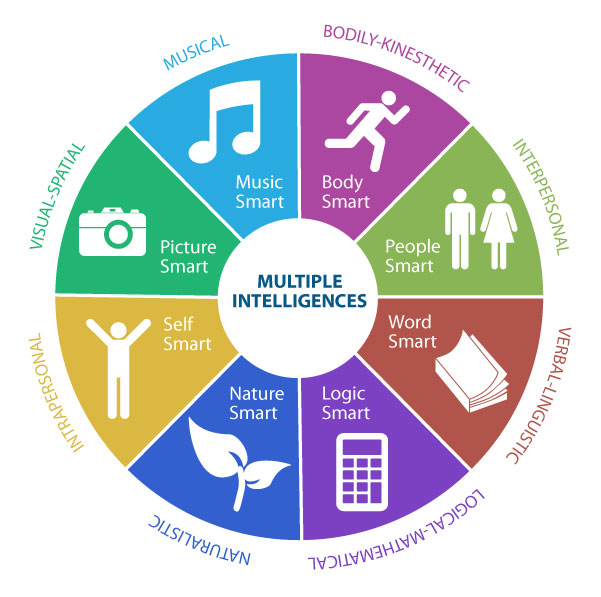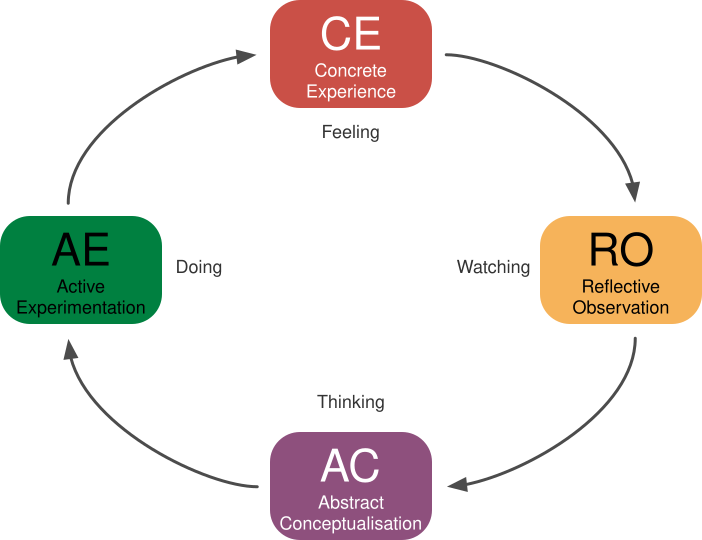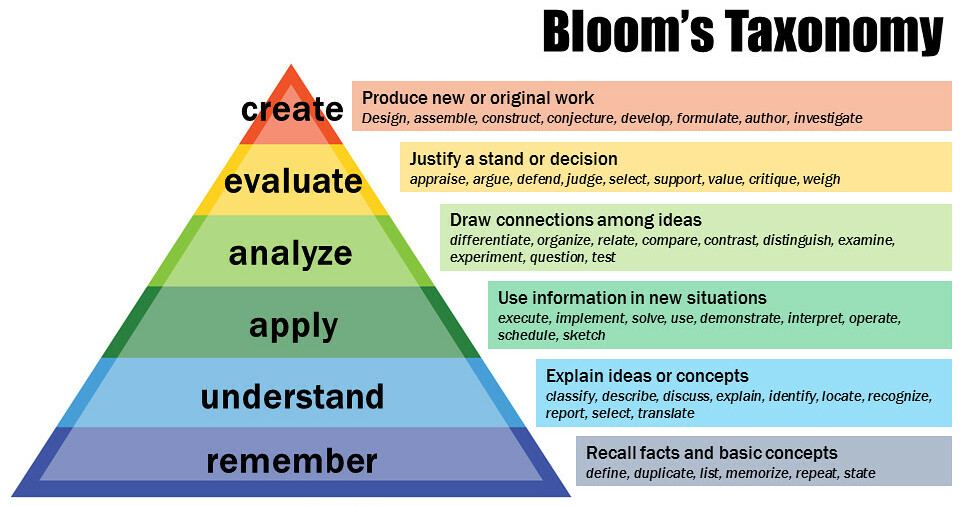1.4 Learning Theories
When providing health teaching and health promotion, nurses should be aware of learning theories underlying their actions. The theories discussed in this section are commonly used and represent only a few of many educational theories regarding teaching and learning.
Knowles’ Theory of Adult Learning
Knowles’ Theory of Adult Learning focuses on the unique needs of adult learners, referred to as andragogy. The following concepts are linked to Knowles’ theory[1]:
- Adults are more self-directed learners and take responsibility for their own learning.
- Nurses can work with clients to determine the order in which information is presented.
- Life experiences are valuable resources for learning.
- Nurses can connect information clients already know to the new information they are learning.
- Adults are better able to learn a concept if there is immediate relevance to life circumstances.
- Nurses can show clients how this information can help them manage and be responsible for their own health.
Nurses who teach adult clients must consider the needs of adult learners as they plan and implement health teaching.
Howard Gardner’s Multiple Intelligence Theory
A second learning theory is Howard Gardner’s Multiple Intelligence Theory. Gardner first proposed the theory of multiple intelligences in his Frames of Mind, where he broadened the definition of intelligence and outlined eight types of intelligences. See Figure 1.1[2] for an illustration of multiple intelligences. This theory challenged the traditional notion that there is one type of intelligence based on cognitive abilities. Gardner introduced eight types of intelligences consisting of Verbal-Linguistic, Logical/Mathematical, Spatial, Bodily-Kinesthetic, Musical, Interpersonal, Intrapersonal, and Naturalist. Learner characteristics for these intelligences include the following[3],[4],[5]:
- Verbal-Linguistic (“Word Smart”): Sensitive to spoken and written language, has an ability to learn languages, and has the capacity to use language to accomplish certain goals.
- Logical-Mathematical (“Number/Reasoning Smart”): Has the capacity to analyze problems logically, carry out mathematical operations, and investigate issues scientifically.
- Spatial (“Picture Smart”): Able to recognize and manipulate the patterns of wide space (for example, those patterns used by navigators and pilots), as well as the patterns of confined spaces (such as those used by surgeons, chess players, graphic artists, or architects).
- Bodily-Kinesthetic (“Body Smart”): Has the ability to use one’s whole body or parts of the body (like the hand or the mouth) to solve problems or to fashion products. For example, people like Michael Jordan and Simone Biles have an ability to use their own body to create products, perform skills, or solve problems through mind–body union. This is also often referred to as preferring a “hands-on approach” to learning.
- Musical (“Music Smart”): Has skills in the performance, composition, and appreciation of musical patterns or the ability to hear, recognize, and perhaps manipulate patterns.
- Interpersonal (“People Smart”): Has the capacity to understand the intentions, motivations, and desires of other people and consequently to work effectively with others.
- Intrapersonal (“Self-Smart”): Has the capacity to understand oneself and be an effective working model of oneself, including one’s desires, fears, and capacities, and to use such information effectively in regulating one’s own life. In other words, knowing how you are, what you can do, what you want to do, how you react to things, which things to avoid, and which things to gravitate toward.
- Naturalistic (“Nature Smart”): Has expertise in the recognition and classification of the numerous species; otherwise known as the flora and fauna of their environment.
The Multiple Intelligence Theory states that individuals have all eight intelligences at varying degrees of proficiency. Nurses must consider a client’s unique characteristics and multiple types of intelligences when planning and implementing health teaching. When assessing learner characteristics, nurses can ask how they learn best and tailor the teaching to their individual types of intelligence.

David Kolb’s Theory of Experiential Learning
David Kolb first published his learning styles model in 1984, from which he developed his learning style inventory. Kolb’s Theory of Experiential Learning works on two levels: a four-stage cycle of learning and four learning styles. Learners progress through four stages, including concrete experience, reflective observation, abstract conceptualization, and active experimentation. See Figure 1.2[6] for an illustration of the four stages of Kolb’s experiential learning cycle.

Kolb states that learning involves the acquisition of abstract concepts based on concrete experiences that can apply flexibility in a range of situations. According to Kolb, learning is an integrated process, with each stage mutually supporting and feeding into the next. Effective learning occurs when a learner can execute all four stages of the model.[7],[8]
Kolb identifies four learning styles as the individual progresses through the four stages of the learning cycle[9],[10]:
- “Feeling and Watching”: The learner encounters a concrete experience. This might be a new experience or situation or a reinterpretation of existing experience in the light of new concepts.
- “Watching and Thinking”: The learner reflects on the concrete experience in the light of their existing knowledge, especially regarding any inconsistencies between experience and understanding.
- “Thinking and Doing”: The learner’s reflection gives rise to a new idea or a modification of an existing abstract concept (i.e., the person has learned from their experience).
- “Doing and Feeling”: The newly created or modified concepts give rise to active experimentation, where the learner applies the new idea(s) to the world around them and experiences what happens.
Nurses must consider the four stages of experiential learning and the related emotions when providing health teaching. For example, a nurse may demonstrate how to use a glucometer to a client newly diagnosed with diabetes and then provide time for the client to experience and process the associated feelings and thoughts associated with using the device. Nurses encourage the client to use active experimentation as they apply the new knowledge and practice the skill they will perform independently at home.
Learning Styles
In addition to the learning styles proposed by Kolb, there are multiple other ways to categorize learning styles. The acronym VARK stands for four commonly used learning styles: Visual, Auditory, Read/Write, and Kinesthetic. Learners typically use more than one style of learning, as defined by the following characteristics[11]:
- Visual: Learners prefer learning methods that involve their sense of sight. They typically excel at reading and writing skills. A visual learner may like to take notes, read, make flashcards, or create outlines. They may have difficulty with performing a skill before either reading about what needs to be done or watching someone do it. It can also be difficult for visual learners to concentrate in a noisy environment, so they may need a quiet environment when studying.
- Auditory: Learners prefer to use their sense of hearing to process new information. They may prefer to listen to the spoken word, either in a lecture setting or in a group discussion. Auditory learners may find it helpful to read content out loud to themselves to grasp concepts. When studying, these learners may prefer to have music playing in the background.
- Read/Write: Learners prefer to use written words to process information. They may prefer viewing PowerPoint presentations, lists, handouts, or reading textbooks.
- Kinesthetic: Learners prefer to physically do things and use touch to process information. They may like to try things out, put things together, and take things apart. They often prefer real-world experiences with direct application examples, such as field trips, role playing, internships, and clinicals.
Nurses integrate diverse learning style theories by using a variety of teaching methods to present information to clients. For example, when teaching a client how to use a glucometer to check their blood glucose, the nurse visually demonstrates how to perform the skill, audibly explains how to do the skill, provides handouts about the skill, and encourages the client to physically practice the skill.
Bloom’s Taxonomy
Bloom’s Taxonomy is a widely recognized learning framework that categorizes three domains of learning and six levels of learning that increase in level of difficulty. Nurses incorporate these domains and levels of difficulty into their health teaching when establishing expected outcomes that will be used to evaluate the client’s learning.
The three domains of learning include cognitive, affective, and psychomotor[12]:
- Cognitive (“Thinking”): This domain includes intellectual skills, such as recalling information. For example, an expected outcome related to the cognitive domain is, “After attending a teaching session on cardiopulmonary resuscitation (CPR), the client will list the three steps of CPR with 100% accuracy.”
- Affective (“Feeling”): This domain includes emotions, attitudes, and values. An example of an expected outcome related to this domain is, “After the small group support session, the client will verbalize acceptance of their new medical diagnosis of diabetes.”
- Psychomotor (“Doing”): This domain refers to the performance of a kinesthetic activity. An example of an expected outcome related to this domain is, “After attending the physical therapy appointment, the client will demonstrate how to use crutches with 100% accuracy.”
In addition to the three domains of learning, the revised version of Bloom’s Taxonomy includes six levels of learning referred to as Remember, Understand, Apply, Analyze, Evaluate, and Create.[13] See Figure 1.3[14] for an illustration of the revised version of Bloom’s Taxonomy. These levels include the following[15]:
- Remember: Recall facts and basic concepts.
- Understand: Explain ideas or concepts.
- Apply: Use information in new situations.
- Analyze: Draw connections between ideas.
- Evaluate: Defend a position.
- Create: Generate new solutions.
Incorporating the six levels of learning from Bloom’s Taxonomy allows nurses to design levels of learning starting with a basic level of recalling facts to higher levels of learning such as applying the information, drawing connections between ideas, and creating new solutions to problems.

- Knowles, M. S., Holton, E. F., & Swanson, R. A. (2015). The adult learner: The definitive classic in adult education and human resource development (8th ed.). Routledge. ↵
- “Multiple-intelligence.jpg” by Sajaganesandip is licensed under CC BY-SA 4.0 ↵
- Gardner, H. (2011). Frames of mind: The theory of multiple intelligences. Basic Books. ↵
- Gardner, H. E. (1999). Intelligence reframed: Multiple intelligences for the 21st century. Basic Books. ↵
- Marenus, M. (2023). Howard Gardner’s Theory of Multiple Intelligences. https://www.simplypsychology.org/multiple-intelligences.html ↵
- “The_Four_Steps_in_Kolb_Cycle.svg.png” by Izhaki is licensed under CC BY 3.0 ↵
- Kolb, D. A. (1984). Experiential learning: Experience as the source of learning and development. Prentice-Hall. ↵
- McLeod, S. (2023). Kolb’s learning styles and experiential learning cycle. https://www.simplypsychology.org/learning-kolb.html ↵
- Kolb, D. A. (1984). Experiential learning: Experience as the source of learning and development. Prentice-Hall. ↵
- McLeod, S. (2023). Kolb’s learning styles and experiential learning cycle. https://www.simplypsychology.org/learning-kolb.html ↵
- VARK Learn Limited. (n.d.). Introduction to VARK - for better learning. https://vark-learn.com/introduction-to-vark/ ↵
- Anderson, L. W., & Krathwohl, D. R. (2001). A taxonomy for learning, teaching, and assessing: A revision of Bloom's taxonomy of educational objectives. Addison Wesley Longman, Inc. ↵
- Anderson, L. W., & Krathwohl, D. R. (2001). A taxonomy for learning, teaching, and assessing: A revision of Bloom's taxonomy of educational objectives. Addison Wesley Longman, Inc. ↵
- “Bloom's_Revised_Taxonomy.jpg” by Vanderbilt University Center for Teaching is licensed under CC BY 2.0 ↵
- Anderson, L. W., & Krathwohl, D. R. (2001). A taxonomy for learning, teaching, and assessing: A revision of Bloom's taxonomy of educational objectives. Addison Wesley Longman, Inc. ↵
Adult learning.
Visual, auditory, read/write, and kinesthetic methods of learning that are preferred by a specific learner.
Three areas of learning, including cognitive (“thinking”), affective (“feeling”), and psychomotor (“doing.”)

